This was not my best-planned vacation. I had decided to go only a week before the trip started and did not buy my guidebook until I arrived in Ho Chi Minh City. I went to the Vietnamese Embassy in Tashkent to get my visa and the consular official said that he could only give me a two-week visa but that it would be no problem to get it extended when I was in Ho Chi Minh City. I considered spending only two weeks in Vietnam then going to Kuala Lumpur, but I discovered that two one-way tickets would be very expensive. I decided to trust that I could get the visa extended in Vietnam.
As usual, nothing is as simple as it seems. Travel agents in Ho Chi Minh City told me that yes, I could get a visa extension, but that I would have to give them my passport for one week while they got the new visa. That would mean no traveling. Foreigners in Vietnam need a passport to take a domestic flight and even to check into a hotel. But the travel agent proposed an attractive option. He explained that it is a short, inexpensive flight to Cambodia, and that when I returned to Vietnam I could get my new visa at the airport for $25. So I decided to go to Phnom Penh and Temples of Angkor in Cambodia for several days.
Something I ate in Vietnam apparently did not agree with my digestive system and I did not have much energy for a couple of days. So one morning I stayed in my hotel to watch the Patriots beat the Steelers in the Super Bowl. I've gotten accustomed to using my Visa card at ATM's all over the world and paying fifty cents an hour for internet cafes that let me keep in touch with my office and my friends, but this was the first Super Bowl I have seen outside the US. In the evenings I watched Australian Open tennis matches.
After checking in at the hotel I asked where to change my US Dollars into Cambodian riel. The clerk explained to me that there was no need. Everywhere I went in Cambodia prices were marked in dollars -- restaurant menus, shops, even government museums. The only times I ever got riel were when I purchased something and received change that was less than a dollar. They don't use US coins, so they use riel to make up the difference.
Phnom Penh's main attraction is the Royal Palace. In the center of the city, spread over many acres are dozens of pagodas, temples and other buildings. The most famous is the "Silver Pagoda" with its floor made of 5000 silver tiles each weighing one kilogram. I was permitted to take pictures outside but not inside.
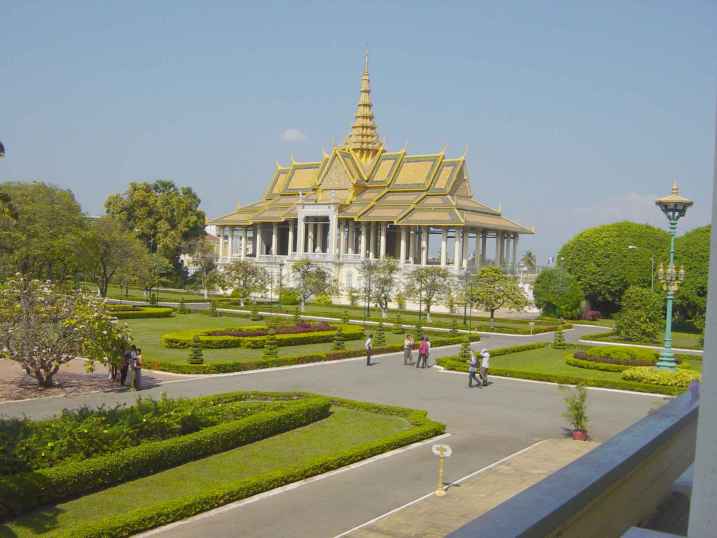
Then I moved on to the National Museum, just a few blocks away. For me, the pottery was not very interesting even though it was more than a thousand years old. To me it was still just ordinary bowls and vases. I preferred the Buddhas, many of which were also older than a thousand years. Apparently there are a number of classic Buddha poses, each signifying a value to be emulated. Sorry -- no pictures allowed indoors. But it was an interesting building with a big courtyard in the center. And I like the animals standing guard at every door. Many of them did not look as though they would deter intruders.
Near my hotel was a Buddhist monastery. As a young Thai monk explained to me last year, most young men become monks at some time in their lives. Some come to the monastery because it offers schooling and there is no expectation that they will remain after they finish school. For others it is more of an initiation into adulthood. After they finish school they go to the monastery for a few months before heading out into the world.
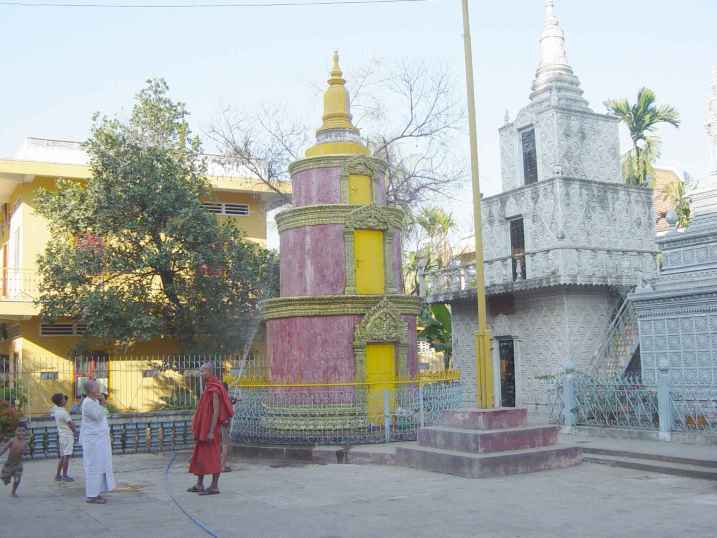
All through Phnom Penh were monuments. This one was in a traffic circle a couple blocks from my hotel.
>After a couple days in Phnom Penh, I flew to Siem Reap, home of the Temples of Angkor made famous by the Indiana Jones movies. I got a ride from the airport to my hotel on a motor bike and the driver convinced me to hire his friend to drive me around the temples after lunch. First stop was the Angkor Wat, a huge temple surrounded by a moat 190 meters wide built in 1152 and used as a temple almost continuously since then. Inside the moat was a thick wall, a courtyard and another wall. Then the temple had several layers. Most of the walls had carvings telling stories.
Back on the motor bike, we passed through a to gate to the city of Angkor Thom. The gate was guarded by 54 gods and 54 demons.
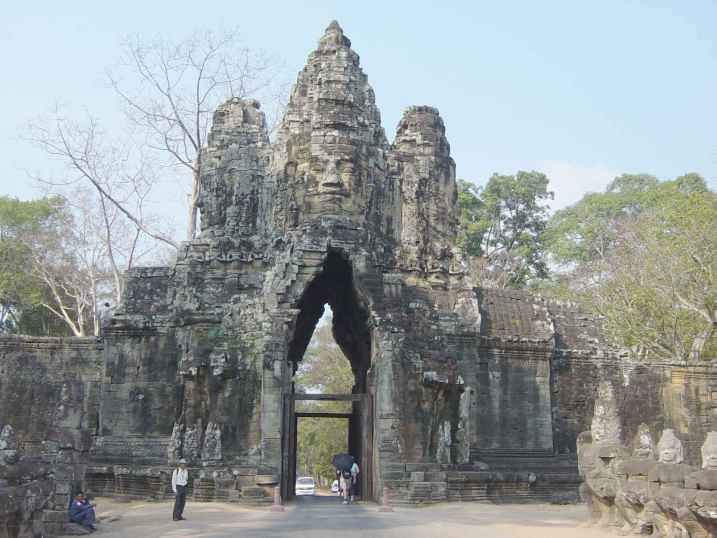
Next stop was the Bayon, a temple the guidebook described as "a place of stooped corridors, precipitous flights of stairs and, best of all, a collection of 54 gothic towers decorated with 216 coldly smiling gargantuan faces", all of the same guy. Unlike the Angkor Wat, this temple and most of the others were abandoned several hundred years ago and the jungle quickly took over. The jungle was only recently cleared to open them to tourists.

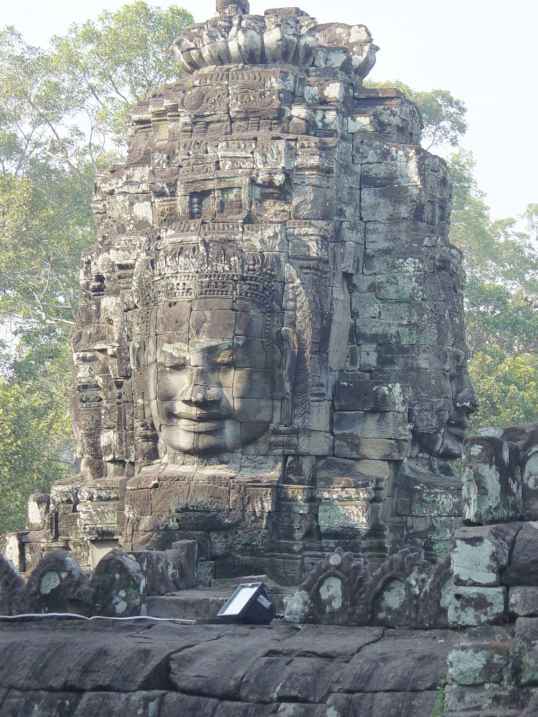
On the city streets and outside many tourist attractions were men who had lost their legs, usually because of land mines. Often they played music or sold souvenirs. The Cambodian government apparently does not have enough money to offer them much assistance.
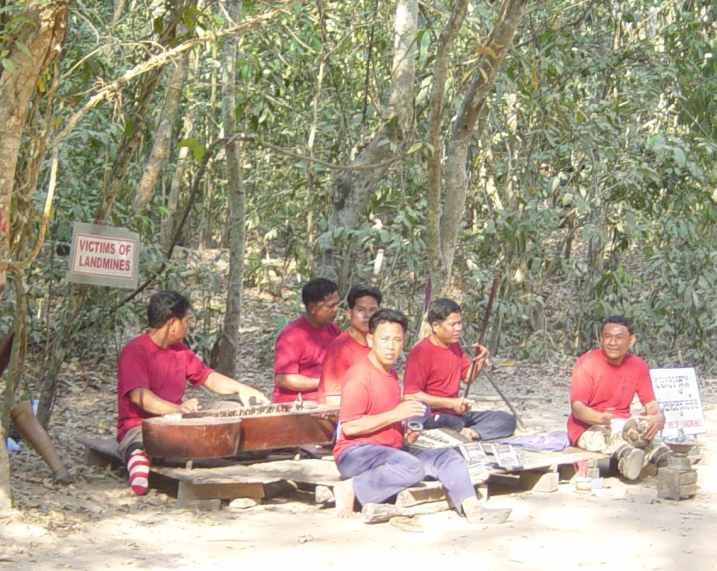
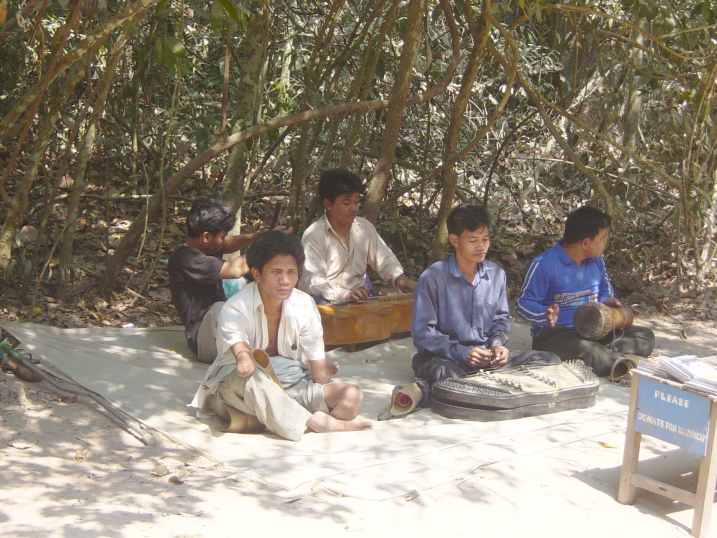
Later I explored more temples scattered over miles of jungle. I think my favorites were the ones where the jungle had not been cleared away from temples. In some, huge old trees were still growing in the midst of the ruins. I also liked the way some ruins looked as though stones had been left where they had fallen, so they looked the same as they would if I had been the discoverer, hacking my way through the jungle, finding the treasure before Indiana Jones.

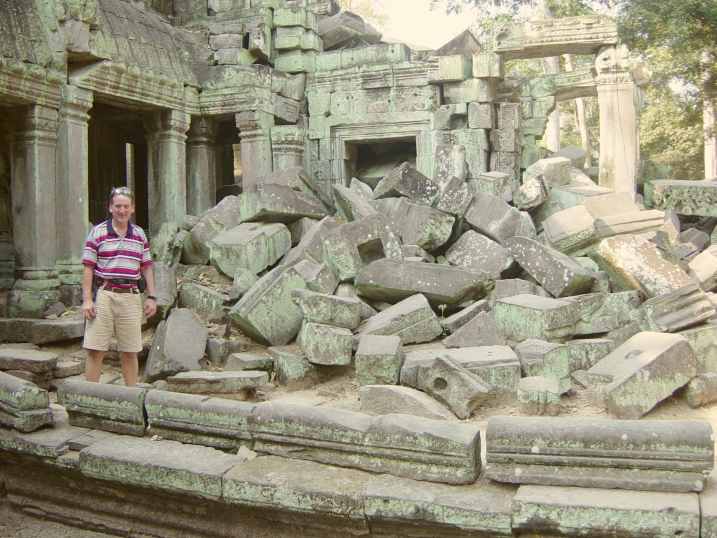

I had enjoyed my short excursion to Cambodia, but I had a late lunch then got on a motor bike and went to the airport. After standing in line to check in, the Vietnamese Airlines official told me that no, it was not possible to get a visa at the airport. The good news was that if I gave him my passport and $85 he could get me the visa in time for tomorrow evening's flight. I complained a bit but I didn't really have much choice, so I paid my money and got a ride on another motor bike and checked back into my hotel.
I had completed my sight-seeing plan for Angkor and didn't really feel like going back tot he temples. So I went to an internet cafe and caught up with work and wandered through many shops without buying anything. I was annoyed at spending the extra money for the visa so I was pleased with myself when I found what seemed to be a reasonable hotel in Hanoi in an excellent location for only $15 per night. The closest I came to sight seeing was visiting the butterfly garden cafe. One man had put a net around his house and yard and paid neighborhood children to catch butterflies. Now he has thousands of them. I bought an ice cream and admired the butterflies.
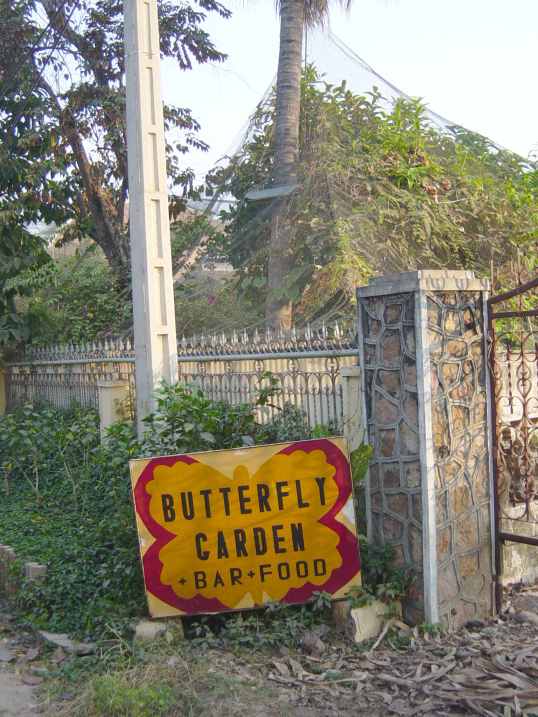
That afternoon I visited the airline office and picked up my passport. In the evening I flew back to Ho Chi Minh City. The next morning I flew 200 miles north to Dalat, arriving in time for a late breakfast. Dalat has two nicknames that are not unrelated: "The Honeymoon Capital of Vietnam" and "The Garden City".
I walked around the city for an hour, then accepted the offer of a motor biker to show me some of the sights. We began by driving a short distance outside the city to a waterfall. This was obviously a popular attraction as there was a well-paved path down the hill from the road and numerous picnic tables.
The next stop was called "the crazy house" and the reason for the name was readily apparent. A local architect built this house using concrete and reinforcing bar and there was hardly a flat wall anywhere in the building.
Next I went for a ride on the cable car, getting a pleasant view and exploring a garden and temple at the other end. When I returned it was time for a picture with my motor biking guide.
Everywhere that we drove in the city we saw flowers. But the next stop on my tour was the city garden. It was huge, with well-manicured flower beds and an impressive variety.
The final stop on the tour was a huge concrete Buddha, recently erected on top of a hill.
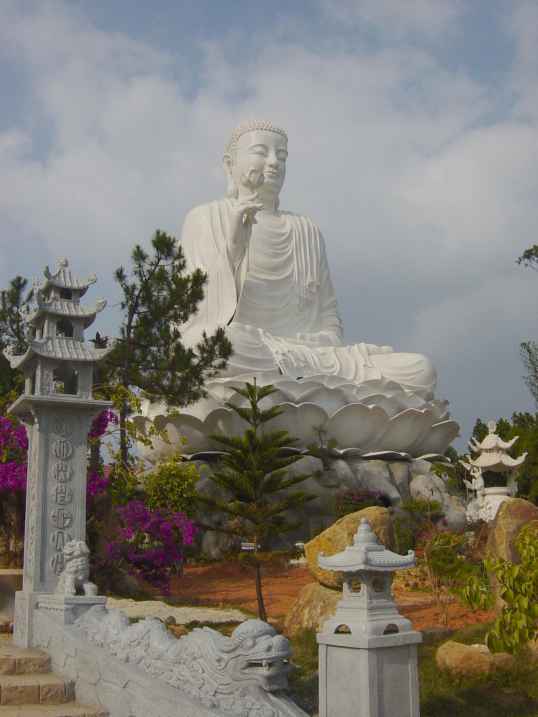
The next morning I rented a bicycle to explore more of the city on my own. Traffic was light and much of the town rather spread out, so the bicycle was a practical means of transportation. The weather was also very pleasant, with the temperature in the seventies, much cooler than it was in Ho Chi Minh City or Cambodia. I read in the guidebook about the Lake of the Sighs and the sad story of the lover who died there, so I found it. It would probably have been more impressive with water in it!
I rode around some more and decided to take a ride on the cog railway. At the railroad station was a steam engine and a sign explaining that it used to pull freight 84 kilometers through the mountains, with 17 of those kilometers so steep that cogs were necessary. I paid my fare then watched a small diesel locomotive move an open passenger car back and forth. It was not at all clear what it was doing until it left the passenger car behind and the five passengers got in the back of the locomotive, sitting on a soft sofa and two easy chairs.
We rode for about fifteen minutes, then stopped at a small station in the village of Trai Mat. The conductor pointed the way to the Linh Phuoc Pagoda. We walked to see the rather gaudy pagoda then admired the view of the countryside.
Dalat was not an exciting town but I enjoyed my short visit. Early the next morning I caught a flight to Hanoi. I wandered around the old French quarter for the afternoon, then signed up for a three-day trip to Halong Bay. So I got up early on a cold, cloudy morning and joined ten other tourists for a bus ride to the harbor. There we got on a wooden boat and headed out into the bay. Soon we were in the midst of thousands of limestone islands.
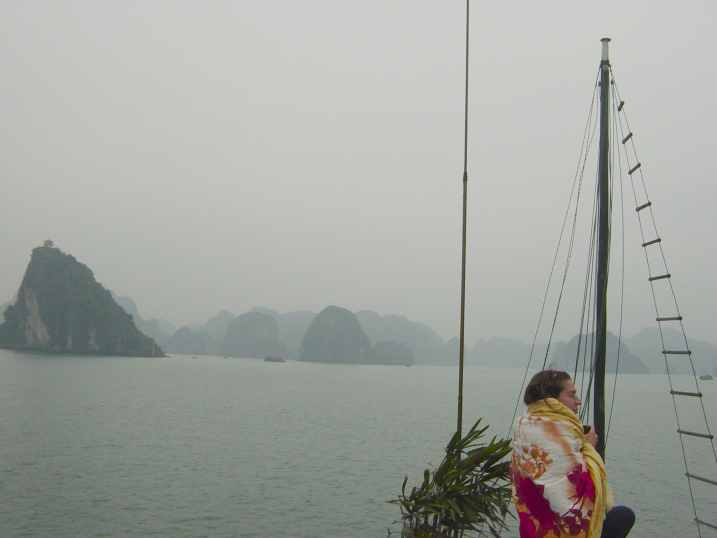
We were served a delicious lunch on the boat, then we cruised to an island with a huge cave. We climbed up the stairs to the entrance then back down inside. Our guide explained about stalagtites and mites as colored lights illuminated the pools inside.
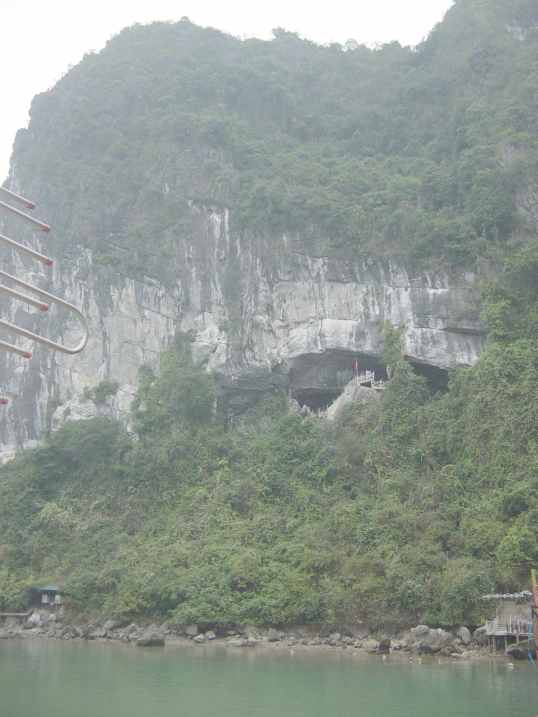
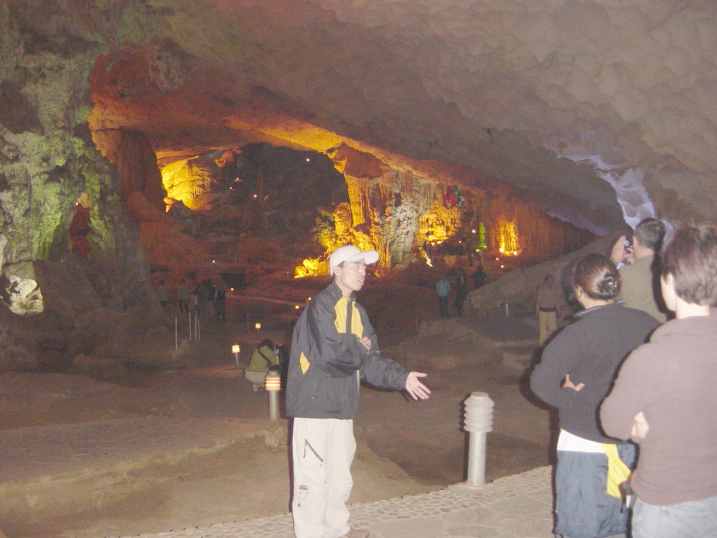
We continued cruising around islands with cliffs dropping straight to the sea, where the waves or the salt had eaten away the limestone and now there was an overhang. Late in the afternoon we dropped anchor in a protected natural harbor with a dozen or more similar boats. Soon dinner appeared and I was ready for an early bed time.

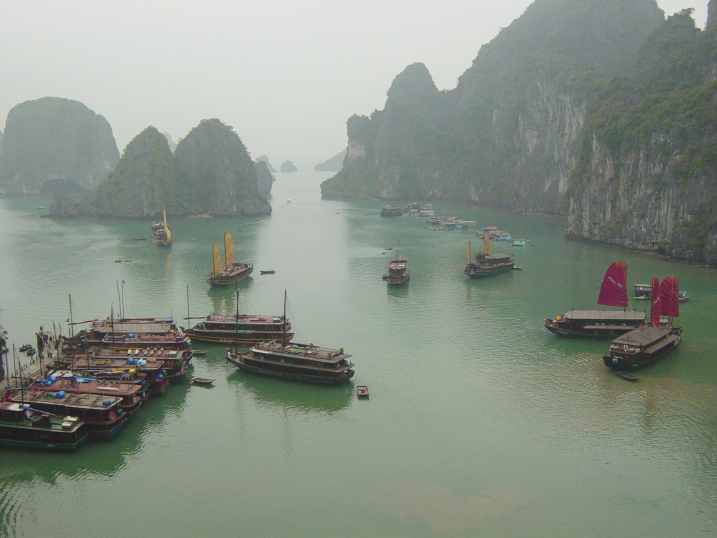
After breakfast and a short cruise we transferred to a smaller boat (trading places with a group who had started a day earlier). We docked in a harbor on an island and walked a couple of miles to a village where we stopped for tea. Then we hiked for an hour up a mountain and admired the cloudy, misty view of the bay and islands.
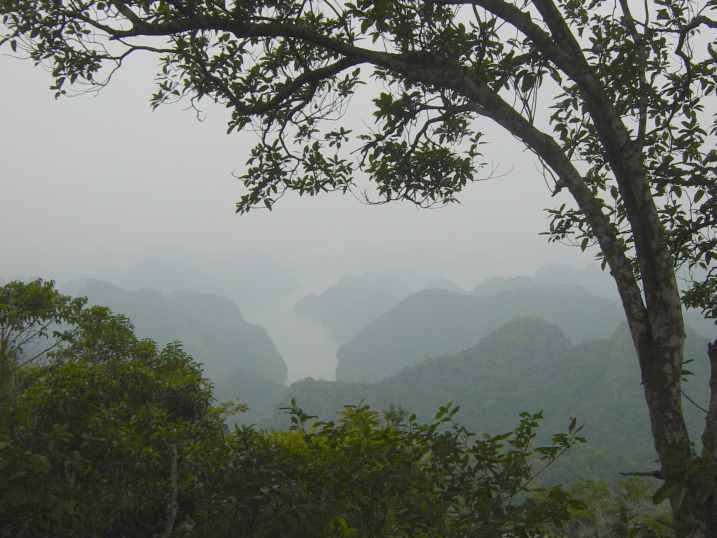
Back in the village we lunch in the courtyard of a house, then walked back down to the boat. After a short ride we switched to kayaks. Then we paddled through a natural tunnel that opened up into a large cove.


After paddling the kayaks we returned to the boat and headed to Cat Ba the largest town on the largest island with the same name. Dinner was in the comfortable hotel. In the evening I was pleased to find an internet cafe where I could check my email. In the morning it was drizzling lightly as we returned to our small boat which took us back to the bigger boat for our trip back to Hai Long and the bus to Hanoi. On the way we saw hundreds more islands. Not many people lived on the islands, but many fished in the bay. Some lived on houseboats with cages underneath for fish farming.


Walking around Hanoi it was easy to see that the Tet New Year was coming. Many people were buying small trees for the celebration. Two kinds of trees were popular. One was green with many orange fruits. Our guide in Halong explained that these were merely for decoration. More valued were "blossom" trees that would be pruned for years like Bonzai. He was newly married and bought one at a stop on our bus ride back to Hanoi. Since most people don't have cars, they prop the trees on the backs of their motor bikes. People were also buying decorations and food for the holiday.
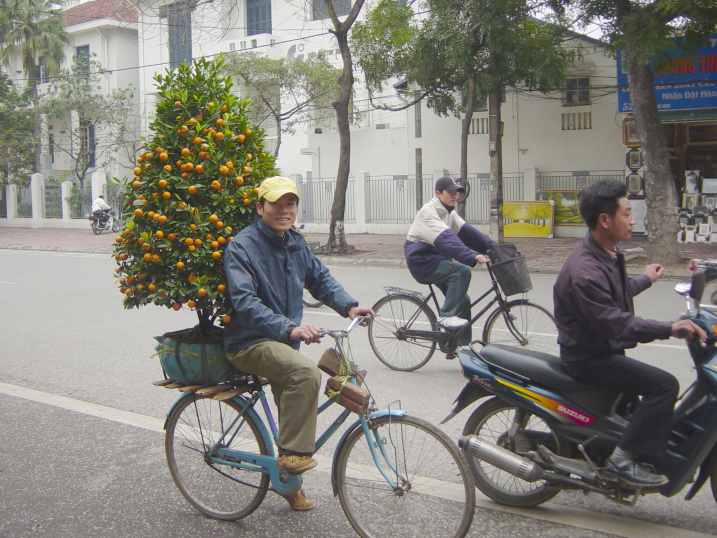
The old french quarter had narrow streets packed with shops selling goods to tourists and local people. There is a large lake in the middle of that district of the city. In the lake is a small island with souvenir stands.
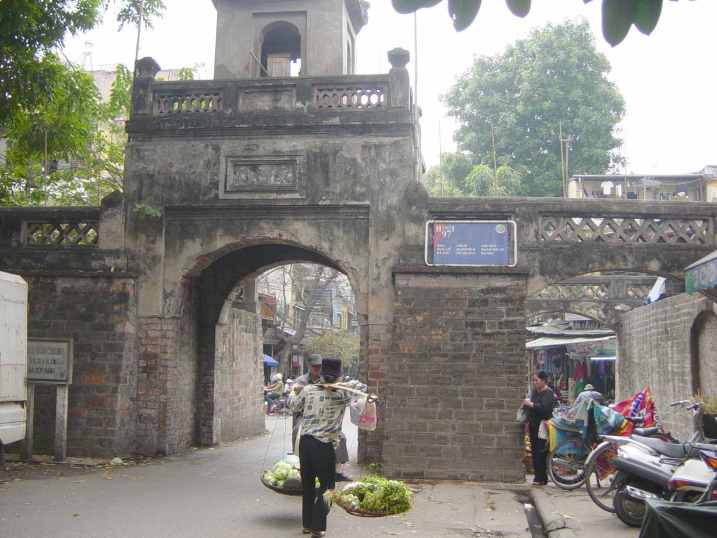
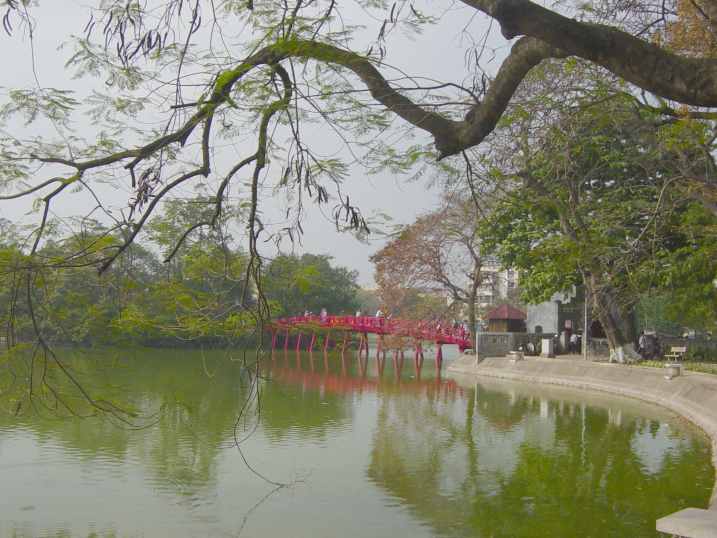
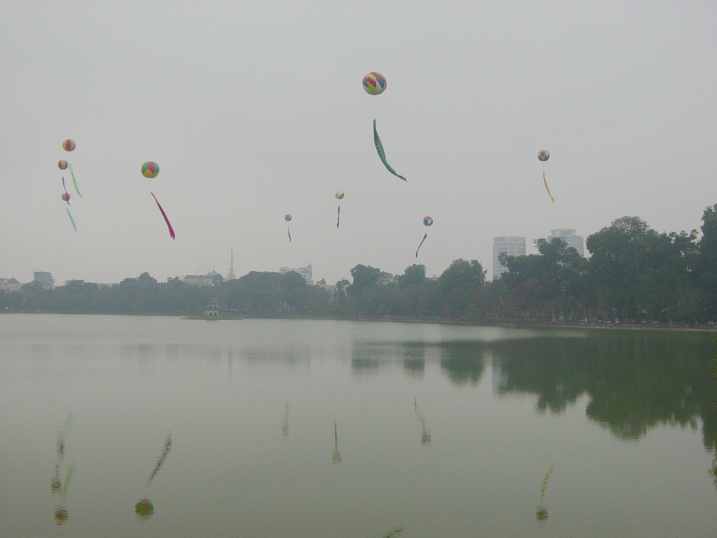
I visited Ho Chi Minh's museum and mausoleum. No pictures were permitted inside and the guards made sure that we kept walking and that our hands were not in our pockets. "Uncle Ho" lay peacefully in the center for all to see. The museum had lots of photos of Ho Chi Minh posing with colleagues in the war and with world leaders and a bit of old Vietnamese art.
Nearby was a house where Ho Chi Minh was said to have lived and worked for many years during the war. It was a simple house on stilts with a bedroom and a small office.
My last evening in Vietnam I had yet another delicious meal featuring shrimp. Then I went to the water puppet theater. Somehow people stand in the water behind a screen and manipulate intricate puppets on the water in front of us. All the time a small band played Vietnamese instruments while a man and a woman took turns singing an accompaniment to the action.
I was surprised that Vietnam seemed such a modern country with so many tourists. ATM's were readily available, shops sold everything I needed at reasonable prices, restaurants served delicious meals with your choice of Vietnamese, Thai, Chinese, Japanese or western food at very cheap prices, hotels were modern, comfortable and reasonably priced. I did not have time to visit the northwestern highlands which are supposed to have both spectacular scenery and interesting villages. I also did not get to the central coast which is said to have idyllic resorts. I guess I will have to return.